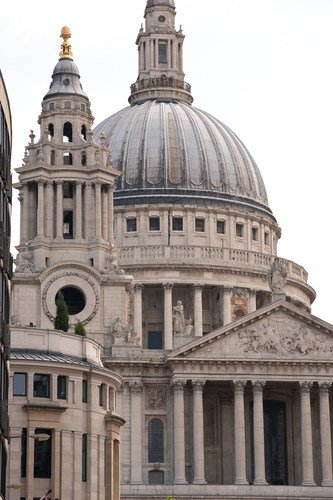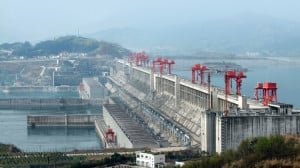What is Concrete? What is Portland Cement?
Bypassing Egypt and Greece, skip up to the mid 1700s, to the Isle of Portland, off of the county Dorset region of England. This area is on the southwestern peninsula of England in what is officially referred to as an “Area Of Natural Beauty,” or AONB. This island is where Portland cement was first made.
The Dorset area is just east of the far end of Cornwall where the peninsula juts out into the sea. Think “Doc Martin” on PBS. It is known as a tourist area and has a mild climate conducive to enjoying the coast and all of its charms. Imagine ignoring all of this to create cement. The famous Portland stone is probably from the Jurassic period, and this island is part of the Jurassic Coast.
Portland stone was used to build St. Paul’s Cathedral in London, England, finished in 1711 and still used on a daily basis. The United Nations building in New York City also has Portland stone in it as well. Portland stone is quarried now, in the present, for construction projects. The island is only four miles long and 1.7 miles wide and has a large area of limestone where huge blocks of stone are hewn from the limestone bed.
That Portland stone was crushed to make powder for cement in 1756 by John Smeaton to build a lighthouse. The base of this lighthouse still stands in the water from more than two centuries ago. Pounding waves could not overpower the cement base. Smeaton’s form of cement was called “hydraulic lime,” which was lime mortar made through hydration. Strangely, this is different than hydrated lime. Anyway, the Smeaton Tower is in Plymouth, Devon.
Smeaton combined different limestones and additives until he found the most effective solution. Several other engineers in England altered the formula and used different versions of it but continued to call it Portland cement. Portland cement was imported here, to America, in the 1870s. The USA makes its own Portland cement now and it has a different formula than the original.
Calcium silicates were used back in the day with a lot of other chemical-sounding named stuff. There are five types of Portland cement, today, and Type I is used as a general purpose cement. Portland cement is used to make concrete, which is why all of this information was included.
A paste of Portland cement and water makes up part of concrete. Gravel and crushed stone are usually other parts of concrete, which can be recycled from torn up roads and buildings and other razed concrete structures. Cement is not concrete since it is only part of the final product. The Latin word, “Concretus,” is the origin of the word, “concrete.” It means “compact or condensed.”
The largest concrete structure in the world is the Three Gorges Dam in China.
It eclipsed the Grand Coulee Dam in the state of Washington when it was finished in 2012. This dam lies over the Yangtze River about a thousand miles west of Shanghai. The dam generated 98.8 terrawatt-hours of electricity in 2014, a world record.
This huge dam contains 27.2 million cubic meters of concrete. This amount has been compared to being enough to build an eight-foot wide sidewalk around the equator. The Grand Coulee Dam used nine million cubic meters of concrete, in comparison. The 17-year span of building time and 10,000 workers that built the dam probably generated some stories as well as electricity. Also, 1.24 million residents had to move to make way for the construction of the reservoir.
Concrete is amazing and certainly durable. If some of the largest structures in the world were built with concrete in mind surly your next project should be also.






